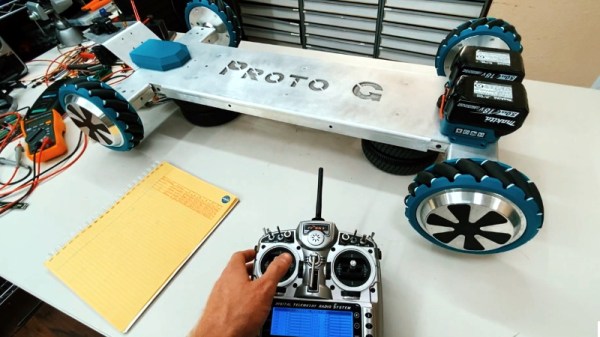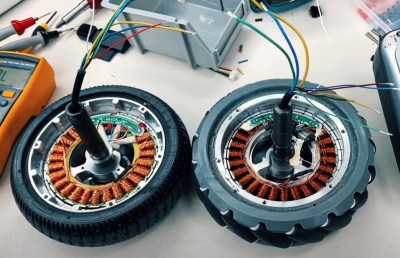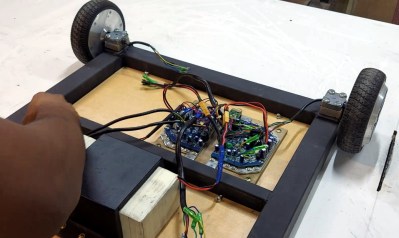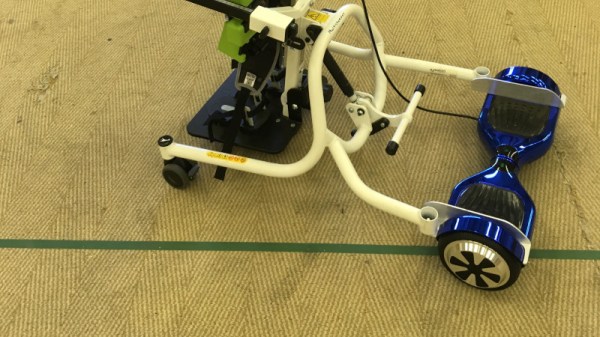Discarded hoverboards are a great source of free high torque motors for hacking. This can include crazy but fun projects like this hoverboard-driven IKEA sofa, as demonstrated by [Bitluni] and his friends at xHain Hackerspace in Berlin.
With a couple of dead hoverboards in various conditions and a working e-bike battery, the group started exploring different options to put together a usable drivetrain. The first attempt involved commanding the motor drivers directly by intercepting communication from the gyro-based controller. The 9-bit communication protocol was a tough nut to crack, so they tried (and failed) to use the gyro-boards directly as the controllers. In the process of researching they discovered someone had created alternative firmware for the hoverboard controllers to allow control with a Wii Nunchuck. There is even a web-based config tool for compiling the firmware.
With some wood spacers screwed to the bottom of the sofa, the hoverboard motors could be attached by simply screwing their enclosure to the bottom of the couch and adding a section of PVC pipe between the halves for wiring. Caster wheels were added to the rear corners of the sofa to complete the chassis. The motors were very sensitive to control inputs on the Nunchuck, so riding the couch tended to rapidly turn into a rodeo event. The couch also wasn’t made to carry its load on the outer corners, so it had to be reinforced with plywood after it started cracking.
We’ve seen plenty of hacks that involve hoverboard motors, including an electric skateboard with mecanum wheels and a surprisingly practical e-bike conversion.
Continue reading “Hoverboard Powered Sofa Is Fun And A Bit Dangerous”
























